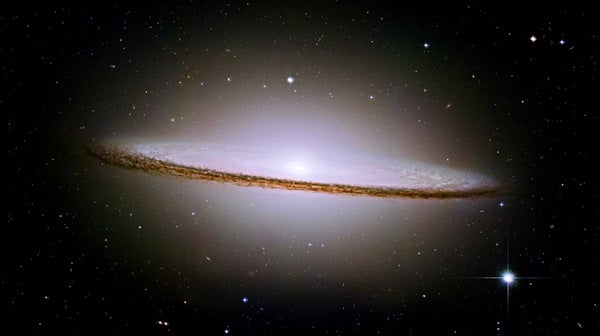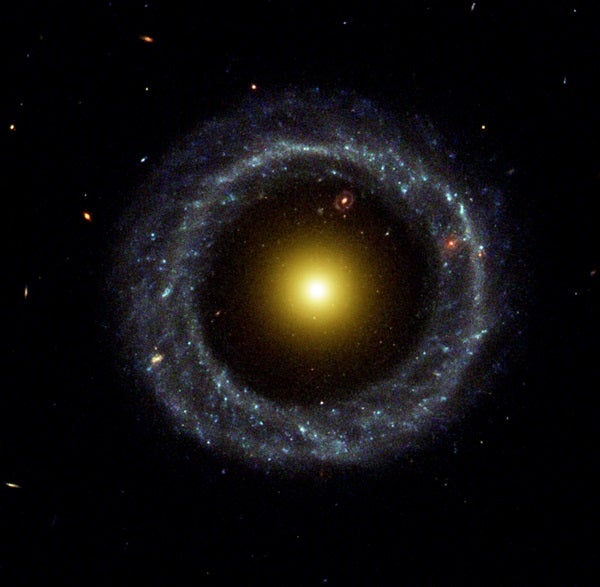While observational tests on the details of cosmology proceed apace, astronomers are focusing on the mechanics of how matter came together in the early universe.
The fundamental question is: Did galaxies, stars, or black holes come first? The infant universe was a relatively uniform sea of several-thousand-degree gas and dark matter — the unseen, mysterious, and predominant form of matter that is indirectly known to exist because of its gravitational influence. But how galaxies, stars, and black holes came together is the key to understanding the puzzle of the early universe.
Based on cosmic microwave background data, astronomers think matter coalesced when the universe cooled and became “transparent” 380,000 years after the Big Bang. And according to recent studies, structures like stars and galaxies formed as early as 200 million years after the Big Bang. But exactly how matter clumped is open to future research.
Deciphering galaxy formation goes back to Walter Baade, who studied stars in galaxies and tried to interpret how the galaxies formed. One of the premier researchers at California’s Mount Wilson Observatory in the 1950s, Baade discovered a group of stars around the Milky Way with few metals (elements heavier than hydrogen and helium). These stars are ancient, probably 13 billion years old. Metals thrown out into interstellar space by supernovae and other processes were eventually incorporated into a younger generation of stars in our galaxy.

Bringing the universe to your door. We’re excited to announce Astronomy magazine’s new Space and Beyond subscription box – a quarterly adventure, curated with an astronomy-themed collection in every box. Learn More >>.
A different idea proposed around the turn of the century is the merger theory. It could have been hatched on Wall Street when the merger buzz was about AOL with Time-Warner and Exxon with Mobil. But those mergers are minuscule when compared to the unions of protogalaxies — blobs of starless, gravitationally bound gas that formed galaxies in the early universe — and galaxies of various sizes that merged together later on.
Indeed, over the years it has become increasingly clear that many galaxies, perhaps the vast majority, formed when small gas clouds came together, merging into larger and larger structures as time went on. This process is called the bottom-up path to galaxy formation.
“We don’t really know which is the dominant path yet,” says John S. Gallagher III, an emeritus professor at the University of Wisconsin-Madison. “There’s a strong theoretical prejudice to make small things and have them grow bigger by having gas fall into them or capturing their neighbors. But astronomers haven’t yet proven that this is the main way it happens.”
Multiple “deep field” images by Hubble show distant galaxies and reveal numerous blob-like objects that appear to be protogalaxies. These are likely the fragments that clung together to form the larger “normal” galaxies we see around us. Many galaxy experts now believe the Milky Way may have formed from the mergers of 100 or more small galaxies over time.
The question of whether galaxies came together as gas and then commenced forming stars or whether stars formed from little pockets of gas and then aggregated into galaxies is unclear. A third possibility is that black holes formed initially as dense pockets of matter. They then swept up material around themselves, and galaxies formed from the surrounding gas that didn’t get sucked in by the black holes.
Just four decades ago, astronomers thought black holes — regions of intense gravity from which no matter or light can escape — were mathematical oddities. But now astronomers armed with large telescopes infer their presence in the centers of most large- and medium-sized galaxies. They are the driving engines of quasars, which are highly energetic objects seen in the most distant galaxies. Astronomers are now close to a consensus that supermassive black holes inhabit the cores of most galaxies, but perhaps not the small ones.












